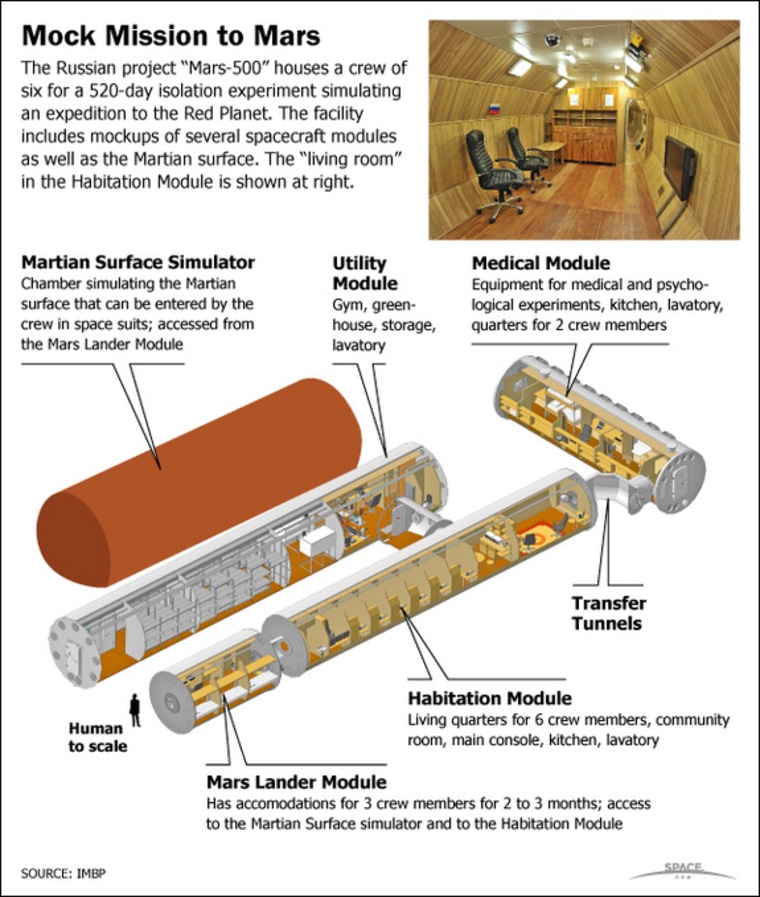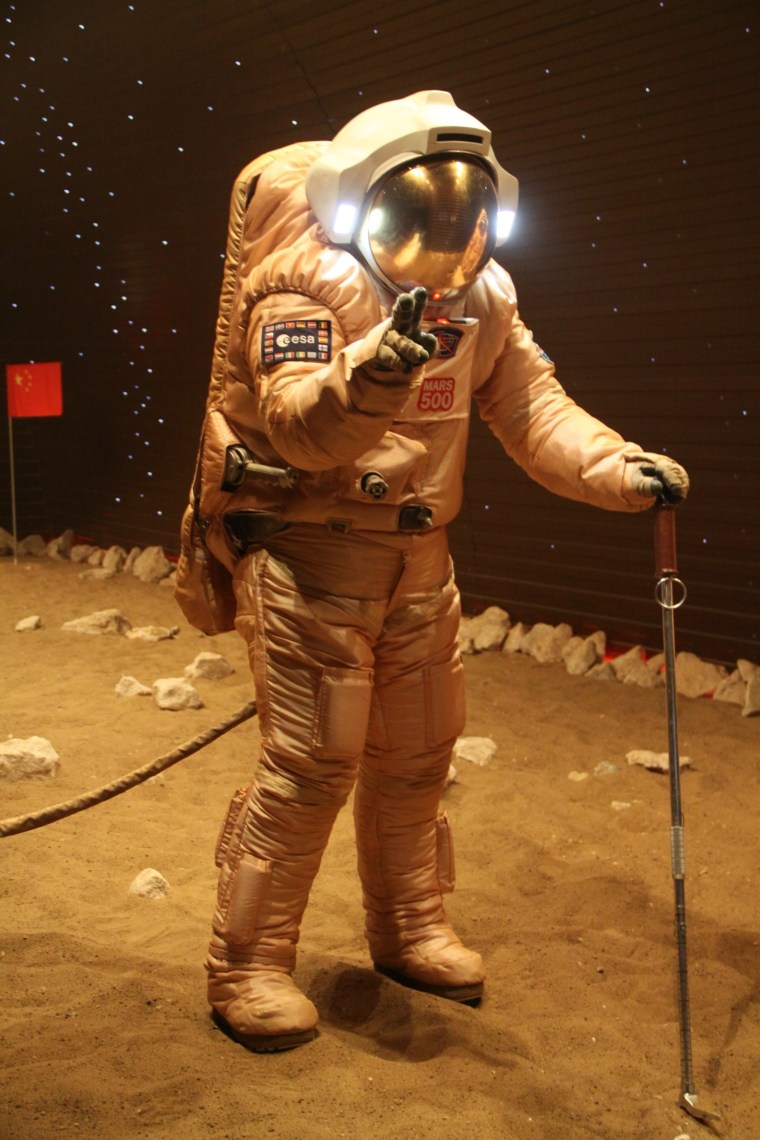Six volunteers have hunkered down inside a glorified trailer, stowed inside a Moscow research institute, for the final leg of their simulated 520-day space mission after bidding farewell to the room they pretended was Mars.
"See you later, Mars!" the Mars500 experiment's team wrote today in a Twitter update. In reality, the make-believe astronauts merely closed the door to their 20-by-20-foot (6.3-by-6.17-meter) "lander" and confined themselves to a habitat complex roughly equivalent to three trailer homes linked together by play-gym tunnels.
It's easy for MSNBC's Rachel Maddow to poke a little fun at the fake Mars mission, as you'll see in the video above. But this isn't merely make-believe: The $15 million experiment at Russia's Institute of Biomedical Problems is aimed at figuring out how to deal with the stresses and scenarios that might crop up during a real-life mission to Mars. For example, an earlier Mars-type simulation went sour in 1999-2000, due in part to sexual tensions. That's one big reason why the Mars500 crew is all-male.

So far, the European-Russian-Chinese crew seems to be getting along pretty well. They coped handily with simulated medical issues as well as communication delays lasting up to 20 minutes (to reproduce the effects of light-travel time between Earth and Mars). Last month, three of the crew members "landed" on a pretend Mars and walked around a big room at the institute that was gussied up with red rocks and fake stars.

During a series of three "Marswalks," the crew members wore mock spacesuits that weighed 77 pounds, to simulate how the real-life spacesuits weighing up to 220 pounds (on Earth) might feel. In his latest diary entry, Mars500 crew member Diego Urbina said that when he stepped out into the made-up Mars room for the first time, the effect was ... eerily real.
"Whether you lived it or saw this scene from the outside, you couldn't avoid thinking of the first steps on the moon, and this time there was in the environment some sort of cosmic projection of the moment, into the future," he wrote. "It felt very inspiring. I could say, beyond a simple simulation."
The Mars landing team also used a video-game-style program called "Virtu" to drive computer-generated rovers through a simulated sandstorm. And at one point they had to take shelter from a hail of simulated meteors.
"For this task we wore a virtual reality helmet, to make it more realistic," Urbina wrote.
Now that the door has been closed on Mars, the six men have another 249 days in isolation ahead of them. There may be more simulated emergencies ahead, but I have a feeling that when the crew emerges from their trailer in November, they'll have smiles on their faces.
The Mars500 mission is the most ambitious of a host of space mission simulations, ranging from the Aquarius underwater simulations in the Florida Keys to the Haughton-Mars Project's experiments in the Canadian Arctic, to the Mars Society's practice runs in Utah and Canada. Are all these trips necessary? Let me know what you think about the idea of simulating far-off space missions — as well as the idea of sending humans on far-off space missions rather than letting robots do all the work.
More about future space missions:
- Obama plans to see landing on Mars
- Radiation could rule out mission to Mars
- Many refuse to give up on moon missions
- Part of space station could be sent to asteroid
Join the Cosmic Log community by clicking the "like" button on our Facebook page or by following msnbc.com science editor Alan Boyle as b0yle on Twitter. To learn more about Alan Boyle's book on Pluto and the search for planets, check out the website for "The Case for Pluto."